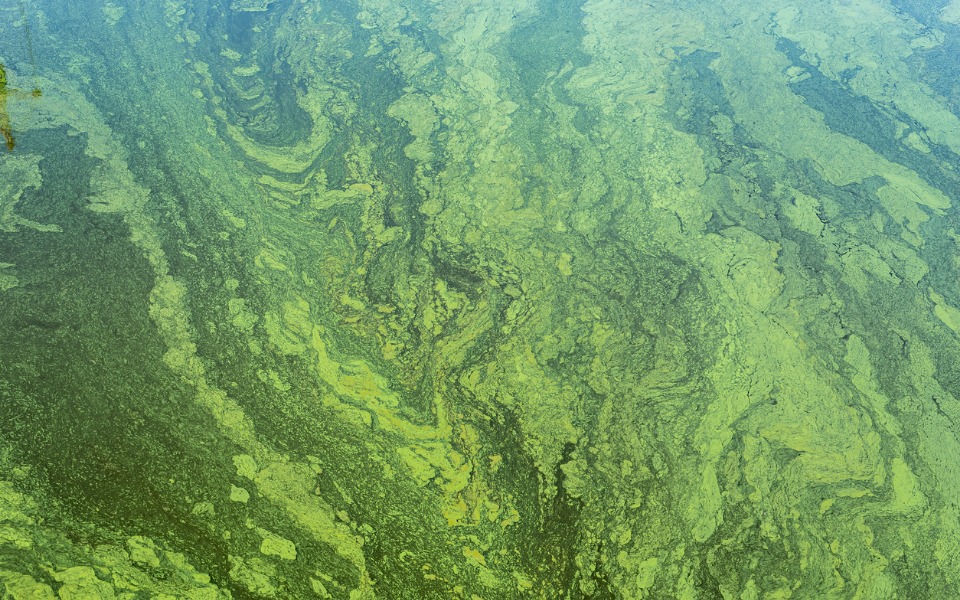
Blooming Phytoplankton in Antarctic ocean may positively impact climate change: Study
Scientists who had earlier observed a reduction in carbon dioxide levels through an increase in phytoplankton photosynthesis and growth have estimated the current phytoplankton bloom in the Antarctic Ocean to have a similar positive environmental effect on the marine ecosystem.

Scientists who have earlier observed a reduction in carbon dioxide levels through an increase in phytoplankton photosynthesis and growth in oceans have estimated the current phytoplankton bloom in the Antarctic ocean to have a similar positive environmental effect on the marine ecosystem.
Benefits of phytoplankton
It has been proven that phytoplanktons remove nearly half of the carbon dioxide from oceans through photosynthesis, preventing excess carbon dioxide from being deleterious to the world climate system.
Phytoplankton is a microscopic, single-celled photosynthetic organism that blooms in the top layer of oceans, becoming a key part of the world ocean ecosystem.
These phytoplanktons can be called the ‘lungs’ of our planet because of their ability to remove almost half of the carbon dioxide that dissolves from the atmosphere into the oceans, produced through various human activities including burning of fossil fuels.
Furthermore, phytoplankton is the base of the marine food chain that generates and supplies organic matter for all marine organisms.
Global modelling studies using historical data have revealed the effects of global warming on the reduction of ocean phytoplankton across the globe due to upper ocean warming and increased stratification. This is an alarming trend, considering the fact that the world marine system is a major sink for carbon dioxide. The reduction in phytoplankton population can reduce the amount of carbon dioxide drawn out of the atmosphere. These harmful gases remain in the ocean for long periods.
On what basis did scientists predict a positive impact of phytoplankton?
Senior scientist Dr Babula Jena and Dr Anil Kumar from the National Centre of Polar and Ocean Research (NCPOR) found in 2017 that there are unprecedented phytoplankton blooms in the Maud Rise polynya in the Antarctic/Southern ocean, with a high concentration of ‘chlorophyll a’ during that year.
The bloom appeared for the first time in the satellite record available, since 1978.
For the past 50 years, the loss of ice shelves and glacier retreat around the Antarctic Peninsula has increased, resulting in the presence of polynyas.
‘Ice holes’ or ‘polynyas’ refer to open water surrounded by ice. These polynyas can enhance ‘chlorophyll a’ concentration due to an increase in surface area of new open waters during the growth season of the phytoplankton in the Southern ocean.
‘Chlorophyll a’ is a specific form of chlorophyll used in oxygenic photosynthesis. It absorbs the most energy from wavelengths of violet-blue and orange-red light. It also reflects green-yellow light, and as such contributes to the observed green colour of most plants.
During the study, NCPOR scientists had earlier observed that due to maximum supply of nutrients into the upper ocean through ‘Ekman transport (upwelling)’ — driven by the ‘wind stress curl’ and cyclonic ocean eddies — and due to improved light conditions in austral spring (October–November 2017), conditions became favourable for phytoplankton photosynthesis and growth in general.
With similar conditions prevailing in the Maud Rise polynya, combined with access to sunlight and nutrients, phytoplankton can bloom in numbers of millions of cells per litre of seawater.
The NCPOR study gives an indication that due to the increase in ‘chlorophyll a’ and appearance of phytoplankton blooms, a shift in the Southern ocean colour in response to warming climate conditions can be witnessed. As a result, the changing colour of the oceans is also expected to play a profound role in overall climate change on our planet.
The study also suggests that the occurrence of phytoplankton bloom in Maud Rise polynya may turn it into a potential sink of atmospheric carbon dioxide through biological pumping and convert it into carbon and energy for the essential base of the marine food web. A portion of this would again circulate back to the surface because of ocean currents fueling another phytoplankton bloom cycle.
The NCPOR study demonstrated how the phytoplanktons in the Southern ocean are likely to respond under warm climatic conditions. Dr Babula Jena believes that whatever has been observed so far with regard to the phytoplankton blooms in 2017 in the shallow bathymetric region of the Southern oceans can happen again in a warm climatic condition in the future during melting of the Antarctic ocean ice.
Led by Dr Babula Jena, the scientific team included Dr Anil Kumar N. Pillai of NCPOR, Goa. The study has been published in The Cryosphere Journal.
(With inputs from India Science Wire)


